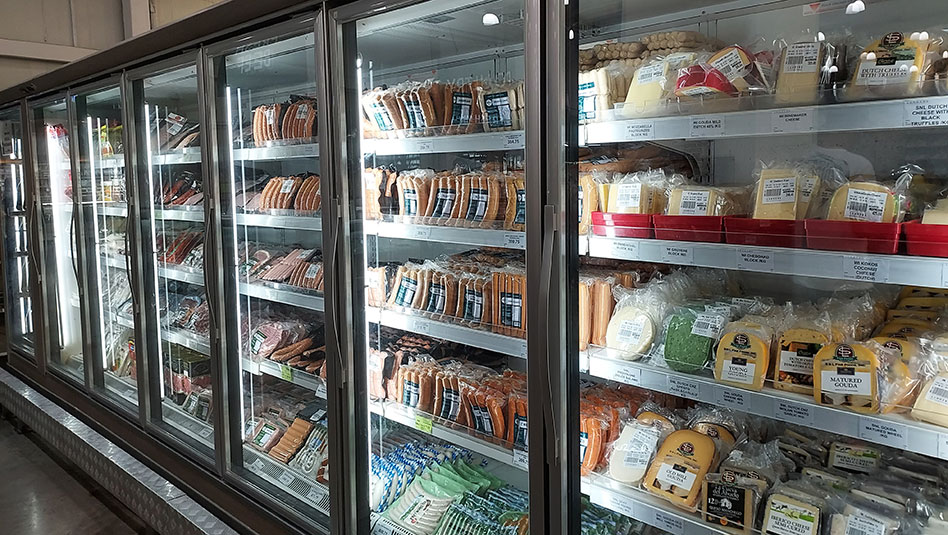




Policy Rate Updates: Double cut finale
 DOWNLOAD
DOWNLOAD

Monthly Economic Update: One for the road
 DOWNLOAD
DOWNLOAD

Inflation Update: Still low, still slow
 DOWNLOAD
DOWNLOAD


Philippine growth seen above 6% until 2026

The Philippines’ gross domestic product (GDP) is expected to accelerate this year and in 2026 amid strong domestic demand, the United Nations (UN) said.
In its latest World Economic Situation and Prospects report, the UN said it expects the Philippine economy to expand by 6.1% in 2025 and 6.2% in 2026.
“The Philippines is one of the strongest growth performers among East Asian economies,” UN Department of Economic and Social Affairs Economic Affairs Officer Zhenqian Huang said in a follow-up e-mail.
“The anticipated sustained growth reflects robust domestic demand, ongoing public investments, and the positive effects of recent investment policy reforms, along with a vibrant labor market and a growing services sector.”
The UN’s forecasts are both within the government’s 6-8% growth target for this year and the next.
It noted that GDP growth likely averaged 5.6% in 2024, below the government’s 6-6.5% target.
For 2025, the Philippines is projected to be the second-fastest growing economy in the region, just after Vietnam (6.5%) and ahead of Cambodia (6%), Malaysia (4.6%), Thailand (3.1%) and Singapore (2.6%).
“In 2025 and 2026, economic growth in the Philippines is expected to be fueled by strong investment activity and robust private consumption,” Ms. Huang said.
“Monetary easing amid lower inflation will support domestic demand in the near term,” she added.
The Bangko Sentral ng Pilipinas (BSP) began its easing cycle in August, cutting interest rates by a total of 75 basis points (bps) last year. This brought the target reverse repurchase rate to 5.75%.
BSP Governor Eli M. Remolona, Jr. has signaled further cuts this year, citing that there is “still room to ease.”
Full-year inflation settled at 3.2% in 2024, in line with the BSP’s own forecast.
It also marked the first time that annual inflation fell within the central bank’s 2-4% target since 2021, when inflation averaged 3.9%.
Ms. Huang also noted “robust” remittance flows, which will help boost household spending.
Latest data from the central bank showed that cash remittances grew by 3% year on year to $28.3 billion in the January-October period.
“Despite ongoing fiscal consolidation, improved government revenue collection over the past decade has enabled sustained public spending on essential infrastructure to unlock long-term potential,” she said.
Latest data from the Bureau of the Treasury (BTr) showed the National Government’s (NG) budget deficit stood at PHP 1.18 trillion in the 11-month period. Revenues jumped by 15.16% year on year to PHP 4.11 trillion.
“Additionally, the global demand for AI (artificial intelligence)-related electronic products is expected to boost merchandise trade, while services trade will benefit from the ongoing recovery in international tourism.”
On the other hand, Ms. Huang flagged downside risks to the growth outlook.
“Increasing trade tensions, including the possibility of higher tariffs, could undermine merchandise trade performance,” she said.
US President-elect Donald J. Trump, who is set to take office next week, has pledged to impose a 10% universal tariff as well as a 60% tariff on Chinese goods.
“Current account deficits since the end of the pandemic make the economy susceptible to exchange rate volatility, especially if there are unexpected monetary policy shifts by major developed country central banks.”
She also noted how the country is vulnerable to climate shocks and natural disasters, which could lead to “significant economic and social losses.”
A recent study by the Asian Development Bank (ADB) showed the Philippines could potentially lose 18.1% of its GDP by 2070 due to climate change under a high emissions scenario.
Meanwhile, the UN expects headline inflation to remain steady at 3% this year until 2026.
“Inflation in the Philippines has been relatively benign and is projected to remain within the central bank’s target range in the near term,” Ms. Huang said.
This year, the BSP expects inflation to average 3.3%. Its risk-adjusted forecast is at 3.4%.
The downtrend in inflation will be mainly driven by easing price pressures on food, she said.
“While inflation is not a major policy concern at the moment, inflationary pressures are unlikely to dissipate entirely… Potential higher tariffs from trading partners, disruptions to supply chains and trade routes, and climate-related disasters could reignite upward pressure on prices,” Ms. Huang said. – Luisa Maria Jacinta C. Jocson, Reporter
This article originally appeared on bworldonline.com





 By BusinessWorld
By BusinessWorld